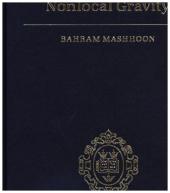 Neuerscheinungen 2017Stand: 2020-02-01 |
Schnellsuche
ISBN/Stichwort/Autor
|
Herderstraße 10
10625 Berlin
Tel.: 030 315 714 16
Fax 030 315 714 14
info@buchspektrum.de |

Bahram Mashhoon
Nonlocal Gravity
2017. 256 S. 16 line figures. 252 mm
Verlag/Jahr: OXFORD UNIVERSITY PRESS; OUP OXFORD 2017
ISBN: 0-19-880380-X (019880380X)
Neue ISBN: 978-0-19-880380-5 (9780198803805)
Preis und Lieferzeit: Bitte klicken
Relativity theory assumes locality, without accounting for the observer´s past history. This book introduces nonlocality, or history dependence, into relativity theory. Inertia and gravitation are deeply tied, suggesting gravity may be nonlocal. The gravitational memory of past events must then be taken into account.
Relativity theory is based on a postulate of locality, which means that the past history of the observer is not directly taken into account. This book argues that the past history should be taken into account. In this way, nonlocality--in the sense of history dependence--is introduced into relativity theory. The deep connection between inertia and gravitation suggests that gravity could be nonlocal, and in nonlocal gravity the fading gravitational memory of past
events must then be taken into account. Along this line of thought, a classical nonlocal generalization of Einstein´s theory of gravitation has recently been developed.
A significant consequence of this theory is that the nonlocal aspect of gravity appears to simulate dark matter. According to nonlocal gravity theory, what astronomers attribute to dark matter should instead be due to the nonlocality of gravitation. Nonlocality dominates on the scale of galaxies and beyond. Memory fades with time; therefore, the nonlocal aspect of gravity becomes weaker as the universe expands.
The implications of nonlocal gravity are explored in this book for gravitational lensing, gravitational radiation, the gravitational physics of the Solar System and the internal dynamics of nearby galaxies, as well as clusters of galaxies. This approach is extended to nonlocal Newtonian cosmology, where the attraction of gravity fades with the expansion of the universe. Thus far, scientists have only compared some of the consequences of nonlocal gravity with astronomical
observations.
We are a bit like the physicists of the early 20´th century who struggled with a crisis of sorts, in attempting to explain away the apparent inconsistency of the so-called "luminiferous aether" that couldn´t be seen but seemed essential for light wave propagation. Of course it was special relativity that saved us from the so-called Fitzgerald contraction as an "epicycle" on Maxwell´s theory. Today we struggle with a different, but perhaps too similar invisible substance called "dark matter." But now Bahram Mashhoon´s "Nonlocal Gravity" develops some beautiful concepts that have the power to instill renewed confidence in Occam´s Razor in the disheartened graduate students, researchers, and teachers of physics and astrophysics who haven´t yet seen a light at the end of the dark matter tunnel. Jeff Kuhn, Institute for Astronomy, University of Hawaii, USA
Bahram Mashhoon has spent his academic career working on relativity and gravitation. This book is the culmination of his work at the University of Missouri in Columbia over the past thirty years. He completed his Ph.D. at Princeton University under the supervision of John A. Wheeler. As an undergraduate, he attended the University of California at Berkeley, where he was mentored in physics by Emilio G. Segrè. Born in Tehran, Mashhoon left Iran in 1966 to
study physics in the US.


